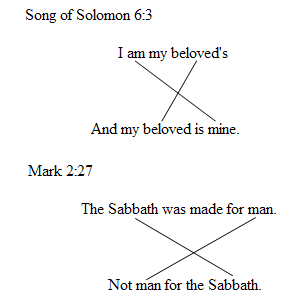Book Review
John W. Welch, ed., Chaismus in Antiquity. Provo, UT: Research Press Reprint edition, 1998. 353 pp., paperback. ISBN: 0-934893-33-0. $24.95.
John W. Welch and Daniel B. McKinley, eds., Chiasmus Bibliography. Provo, UT: Research Press, 1999. vii+193 pp., paperback. ISBN: 0-934893-34-9. $19.95.
In our search for tools which analyze the structure of Old and New Testament texts, Chaismus in Antiquity has proved a watershed. When it was first released in 1981, it became the "place to begin" for investigation of biblical chiasms. It was particularly to the back of the volume ("Index—Hebrew Canon," pp. 297-338; "New Testament," pp. 341-52) that we eagerly turned looking for a potential book, article, commentary on the chiastic structure of our passage. Welch was the only tool with an indexed compilation of the literature on Old and New Testament chiasms.
Now we have the marvelous supplement (Chiasmus Bibliography) to the 1981 volume which updates the index bibliography to 1999. What a treasure house of information! The companion volume is indexed alphabetically by author with a brief outline of the chiastic pattern in a given Old or New Testament passage. Complete bibliographical information is provided should the reader wish to pursue the entire article and complete explanation. But that is not all. The companion volume also contains a complete Scripture index of all articles on chiastic patterns, cross-referenced to the author index at the front of the book. In other words, the Chiasmus Bibliography is a "one-stop" reference for chiastic patterns in the Bible.
The original volume by Welch reminded us that chiasm was not unique to the Bible. It was, in fact, a common literary device in the Ancient Near Eastern milieu. The ancient Sumerians, Akkadians, inhabitants of Ugarit, Greeks and Romans used chiastic devices in hymns, poems, narrative—both sacred and secular texts. We are not surprised therefore when we discover the device in inspired Hebrew and Christian literature. Also known as a palistrophe or reverse parallelism/concentrism, the term "chiasm" is taken from the criss-cross pattern similar to the Greek letter chi (X). Here are two examples.

The Old Testament example underscores the reciprocity between the female and male lover of the Song (certainly one of the lovely features of the book). The New Testament example reinforces the emphatic position of the Sabbath in man's history (even as the Sabbath's Lord hallows the day). Chiastic patterns in Scripture therefore contain theological insights. And the careful student of the Word of God is alert to the richer dimension of revelation provided via chiastic structure.
Both of these volumes contain chapters on the "omnipresent chiasm." Our enthusiasm may carry us into "chiasms" where there are, in fact, no chiasms. Welch provides a chapter ("Criteria for Identifying and Evaluating the Presence of Chiasmus" in Chiasmus Bibliography, pp. 157-74) in which he attempts to bring some rigor to the discussion. By means of fifteen criteria, he analyzes the factors making up a true chiasm as distinct from a contrived or artificially imposed thematic chiasm.
Together, these volumes are a wonderful entrance into (and index to) chiasm in the Bible. They belong on the shelf of every serious pastor and student. (NB: both volumes also include chiastic analysis of the Book of Mormon.)
James T. Dennison,
Jr.
Northwest Theological Seminary
Lynnwood, Washington